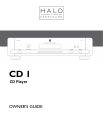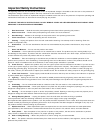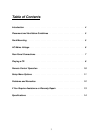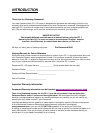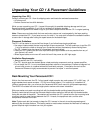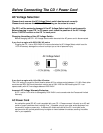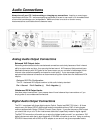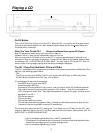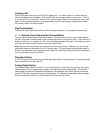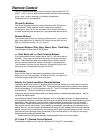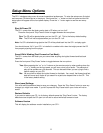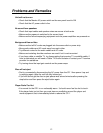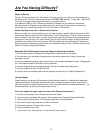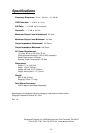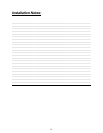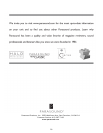9
Loading a CD
Push the CD gently but firmly into the CD 1’s loading slot. You need to push it in further than you
would a car stereo slot-load player. Push the CD until its front edge sticks out only about 1” (25mm)
in front of the CD 1’s front panel. After the CD 1 pulls the disc inside it will automatically start to play
about 10 seconds later because it is reading ahead on the CD and loading a huge amount of data
into memory where it can be analyzed. .
Play-Pause Button
Pressing the Play-Pause button while the CD is playing will pause it. Press again to resume play.
< > Buttons (Track Skip and Fast Forward/Back)
The front panel < and > buttons have two functions. One short press of the > button skips ahead to
the CD’s next track; one short press of the < button skips back to its previous track. If you continue to
press and hold the < or > buttons the CD 1 will fast forward ahead or fast back. The longer you press
the button the faster the fast forward or fast back speed will be.
Note: Fast forward and fast back are normally silent until play resumes. However, you can choose
audible fast forward or fast back in the CD 1’s setup menu. The fast forward and fast back speed is
slower if you want them to be audible It will also stop every 20 seconds and play for a few seconds so
you can hear where you are on the CD.
Stop-Eject Button
If a CD is playing, the first time you press the Stop-Eject button it will stop playing. Pressing the Stop-
Eject a second time will eject the CD.
Analog Output Button
The Discrete-Opamp button on the CD 1’s front panel gives you the option of listening to the analog
outputs directly from the opamp output stage or the discrete transistor output stage. The discrete
output stage uses discrete transistors that operate in the feedback loops of the opamps so that the
specs for THD and noise are the same for both settings. The discrete output setting subtly changes
the sonic character of the CD 1 and fortunately there is no “wrong” choice.



